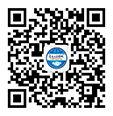Effect of Three Extraction Methods on the Volatile Components of Zanthoxylum bungeanum
-
摘要: 为探究不同提取方法以及不同提取参数对花椒提取物挥发性物质组成的影响,以红花椒为原料,通过油浸法浸提、水蒸气蒸馏及超临界CO2萃取获得花椒提取物,采用固相微萃取与气相色谱质谱联用法测定花椒提取物中挥发性物质种类及含量,并通过主成分分析法及相对气味活度值评价提取物品质。对三种提取方法鉴定出的挥发性物质总数进行统计,发现油浸法、水蒸气蒸馏法和超临界CO2萃取法提取物中分别鉴定出挥发性物质65种、100种和82种。超临界CO2萃取法得到花椒提取物中挥发性物质含量最高为13909.90 μg/mL、水蒸气蒸馏法次之为1152.61 μg/mL、油浸法最低为249.38 μg/mL,对香气物质进行主成分分析发现各组得分与香气物质总含量在各单因素条件下的变化趋势相同。其中油浸法在料液比1:5、浸提时间5 h、浸提温度140℃时,水蒸气蒸馏法在料液比1:10、浸提时间2 h时,超临界CO2萃取法在乙醇添加量7%、乙醇添加比例85%时挥发性物质总含量及香气物质综合得分最高。相对气味活度值结果表明三种提取方法样品关键香气物质不同,油浸法样品中月桂烯对香气贡献最大,水蒸汽蒸馏法样品中芳樟醇与桉树醇对香气贡献最大,超临界CO2萃取法样品中芳樟醇对香气贡献最大。综上所述,提取方法的差异会导致挥发性物质,特别是关键香气物质种类与含量的显著变化,超临界CO2萃取法提取物中挥发性物质与香气物质含量高于其他两种提取方法。
-
关键词:
- 红花椒 /
- 油浸法 /
- 水蒸气蒸馏法 /
- 超临界CO2萃取法 /
- 气质联用(GC-MS) /
- 主成分分析(PCA) /
- 相对气味活度值(ROAV)
Abstract: The experiment was carried out by using Zanthoxylum bungeanum as raw material and extraction of Zanthoxylum bungeanum by oil extraction,steam distillation and supercritical CO2 extraction. The purpose of this experiment is to explore the effect of different extraction methods and different extraction parameters on volatile components of Zanthoxylum bungeanum extract.In addition,solid phase micro-extraction(SPME)combined with gas chromatography-mass spectrometry(GC-MS)was employed to determine the volatile substances and content in Zanthoxylum bungeanum extract. The quality evaluation of extract were analyzed by principal component analysis(PCA)method and relative odor activity value(ROAV).Under all conditions,65,100 and 82 kinds of volatile substances were identified by oil extraction,steam distillation and supercritical CO2 extraction respectively. The highest content of volatile substances was obtained by supercritical CO2 extraction,followed by steam distillation and oil extraction,13909.90,1152.61 and 249.38 μg/mL,respectively. The results of principal component analysis showed that the change trend of the scores of each group was the same as that of the total content of aroma substances under each single factor condition. Among them,oil extraction,steam distillation and supercritical CO2 extraction had the highest total content of volatile matter and the highest comprehensive score of aroma matter when the ratio of material to liquid was 1:5、the extraction time was 5 h、and the extraction temperature was 140 ℃,the ratio of material to liquid was 1:10、the extraction time was 2 hours,and 7% ethanol addition、the ratio of ethanol was 85%,respectively. According to the value of relative odor activity,the key aroma components of the three extraction methods were different. Laurene contributes the most to the aroma in the oil extraction method,linalool and eucalyptus alcohol contribute the most to the aroma in the steam distillation method,and linalool contributes the most to the aroma in the supercritical CO2 extraction method. In conclusion,the differences of extraction methods lead to significant changes in the types and contents of volatile substances and key aroma components in Zanthoxylum bungeanum extracts. The content of volatile substances and aroma components in supercritical CO2 extracts are both the highest among the three methods. -
[1] 毕君,王春荣,赵京献,等. 北方花椒主产区种质资源考察报告[J]. 河北林果研究,2003,18(2):165-168. [2] 董小强,王玉明. 花椒习性与栽培技术[J]. 科技视界,2019(1):232-233. [3] M S R,Z Y Janet. Safety assessment of food additives:Case example with myrcene,a synthetic flavoring agent[J]. Toxicologic Pathology,2019,47(8):1035-1037.
[4] L Yu,W LWu,Y Y Pan,et al. Quality evaluation of different varieties of Zanthoxylum bungeanum Maxim. peels based on phenolic profiles,bioactivity,and HPLC fingerprint[J].Journal of Food Science,2020,85(4):1090-1097.
[5] X X Zhang,X Q Zhou,Z Y Xi,et al. Surfactant-assisted enzymatic extraction of the flavor compounds from Zanthoxylum bungeanum[J]. Separation Science and Technology,2019,55(5):1-10.
[6] 张郁松. 花椒风味物质不同提取方法的比较[J]. 中国调味品,2013,38(6):91-92 ,102.
[7] 孟庆君,李凤飞,杨文江.不同提取方法对花椒提取物提取率和品质的影响[J].中国食品添加剂,2011(6):113-117. [8] 石雪萍,张卫明. 花椒挥发油的超临界CO2萃取法与水蒸气蒸馏法提取的比较[J]. 中国野生植物资源,2009,28(6):46-51. [9] 王芳,石地娟,孙琛,等. 油浸法提取花椒风味物质的研究[J]. 中国调味品,2015,40(6):76-79. [10] Z Wenlin,T Si,X Wanpeng,et al. Comparison of volatile components in fresh and dried Zanthoxylum bungeanum Maxim[J]. Food Science and Biotechnology,2019,28(4):1083-1092.
[11] 牛文婧,田洪磊,詹萍. 基于主成分分析的花椒油香气质量评价模型的构建[J]. 食品工业科技,2019,40(17):263-269 ,275.
[12] 何静,陈谷,何倩娴,等. 广陈皮精油的特异性分析[J]. 现代食品科技,2020,36(2):224-231. [13] J Ke,Y Qu,S Li,et al. Application of HPLC fingerprint based on acid amide components in Chinese prickly ash(Zanthoxylum)[J]. Industrial Crops and Products,2018,119:267-276.
[14] 田卫环,张蓓. 4种不同产地青、红花椒挥发油成分及香气特征研究[J]. 香料香精化妆品,2017(2):7-11. [15] 胡丽丽. 花椒调味油制备的研究[D]:成都:西华大学,2013. [16] L Hu,C Yin,S Ma,et al. Assessing the authenticity of black pepper using diffuse reflectance mid-infrared Fourier transform spectroscopy coupled with chemometrics[J]. Computers and Electronics in Agriculture,2018,154:491-500.
[17] T Sriwichai,P Sookwong,M W Siddiqui,et al. Aromatic profiling of Zanthoxylum myriacanthum(makwhaen)essential oils from dried fruits using different initial drying techniques[J]. Industrial Crops and Products,2019,133:284-291.
[18] Q Guo,W Wu,DL Massart,et al. Feature selection in principal component analysis of analytical data[J]. Chemometrics and Intelligent Laboratory Systems,2002,61(1):123-132.
[19] 蒲凤琳,孙伟峰,车振明,等. 水蒸气蒸馏结合GC-MS法分析比较四川汉源青、红花椒挥发性香气成分[J]. 中国调味品,2017,42(1):23-27. [20] W J Zhang,S S Guo,C X You,et al. Chemical composition of essential oils from Zanthoxylum bungeanum Maxim. and their bioactivities against Lasioderma serricorne[J]. Journal of Oleo Science,2016,65(10):871-879.
[21] 孙宝国. 食用调香术[M].北京:化学工业出版社,2010. [22] 林翔云. 调香术[M]. 3版.北京:化学工业出版社,2013. [23] 林翔云. 香精香料辞典[M].北京:化学工业出版社,2007. [24] 王劲. 超临界二氧化碳提取花椒油工艺研究[J]. 中国调味品,2016,41(4):92-95. [25] S M Liu,S J Wang,S Y Song,et al. Characteristic differences in essential oil composition of six Zanthoxylum bungeanum Maxim.(Rutaceae)cultivars and their biological significance[J]. Journal of Zhejiang University Science B,2017,18(10):917-920.
-
期刊类型引用(11)
1. 昝博文,唐丽,白婷,张佳敏,王卫. 预调理回锅肉在不同灭菌及贮藏条件下挥发性风味物质的变化分析. 中国食品添加剂. 2023(03): 42-55 .  百度学术
百度学术
2. 赵燕飞,卫博慧,王芮东. 静态顶空-气相色谱-质谱法分析不同产地大红袍花椒中挥发性成分. 理化检验-化学分册. 2023(02): 195-203 .  百度学术
百度学术
3. 罗忠圣,黎浪,严艳芳,郑前方,吴红,徐昌艳,覃容贵. Box-Behnken响应面法优选贵州产青椒精油提取工艺. 中国药业. 2023(05): 36-40 .  百度学术
百度学术
4. 王友峰,罗忠圣,黎浪,杨小生,严艳芳,杨娟,覃容贵,罗喜荣. 黔产青花椒精油成分分析及抑菌、抗氧化活性研究. 中国食品添加剂. 2023(04): 285-292 .  百度学术
百度学术
5. 班明辉,韩富军,金光辉,王全奎,林培录,张聚会,黄艳芳. 嫁接‘无刺大红袍’花椒基本品质与挥发性香气组分比较分析. 经济林研究. 2023(01): 265-272 .  百度学术
百度学术
6. 陆大鹏. 水产品挥发性成分的研究进展. 食品安全导刊. 2022(03): 142-145 .  百度学术
百度学术
7. 卢利平,杨琦,周莹,王硕,李佳怡. 基于微量元素多元统计和微观形态分析的花椒叶产地及品种判别. 食品安全质量检测学报. 2022(07): 2274-2281 .  百度学术
百度学术
8. 祝晓云,张开艳,余家奇,刘玉倩,杨凤飞,杨秀伟,刘培洪,杨忠兰. GC-MS法分析两种花椒挥发油的成分. 亚太传统医药. 2022(09): 68-73 .  百度学术
百度学术
9. 袁波,张佳敏,王卫,白婷,翁德晖,向聪,杨浩. 豆豉兔丁在贮藏过程中挥发性风味成分测定及其动态分析. 中国调味品. 2022(10): 34-40 .  百度学术
百度学术
10. 马钤,郭川川,张峰轶,杨壹芳,熊伟. 花椒精油亚临界流体萃取工艺优化及GC-MS分析. 中国酿造. 2022(10): 201-206 .  百度学术
百度学术
11. 李伟. 花椒中香气成分分析研究进展. 中国食品添加剂. 2021(12): 192-196 .  百度学术
百度学术
其他类型引用(6)
计量
- 文章访问数: 393
- HTML全文浏览量: 24
- PDF下载量: 31
- 被引次数: 17





 下载:
下载:



